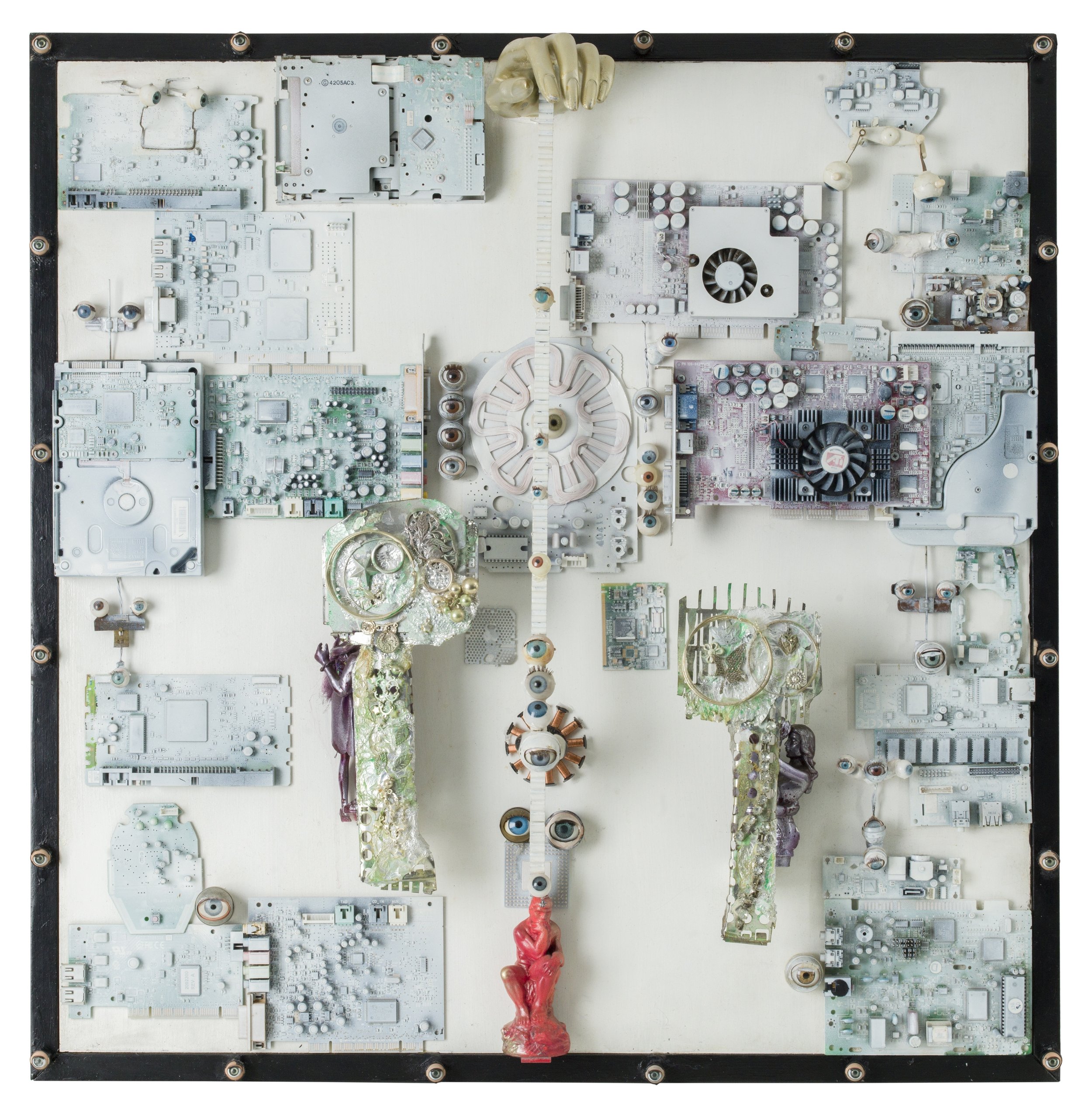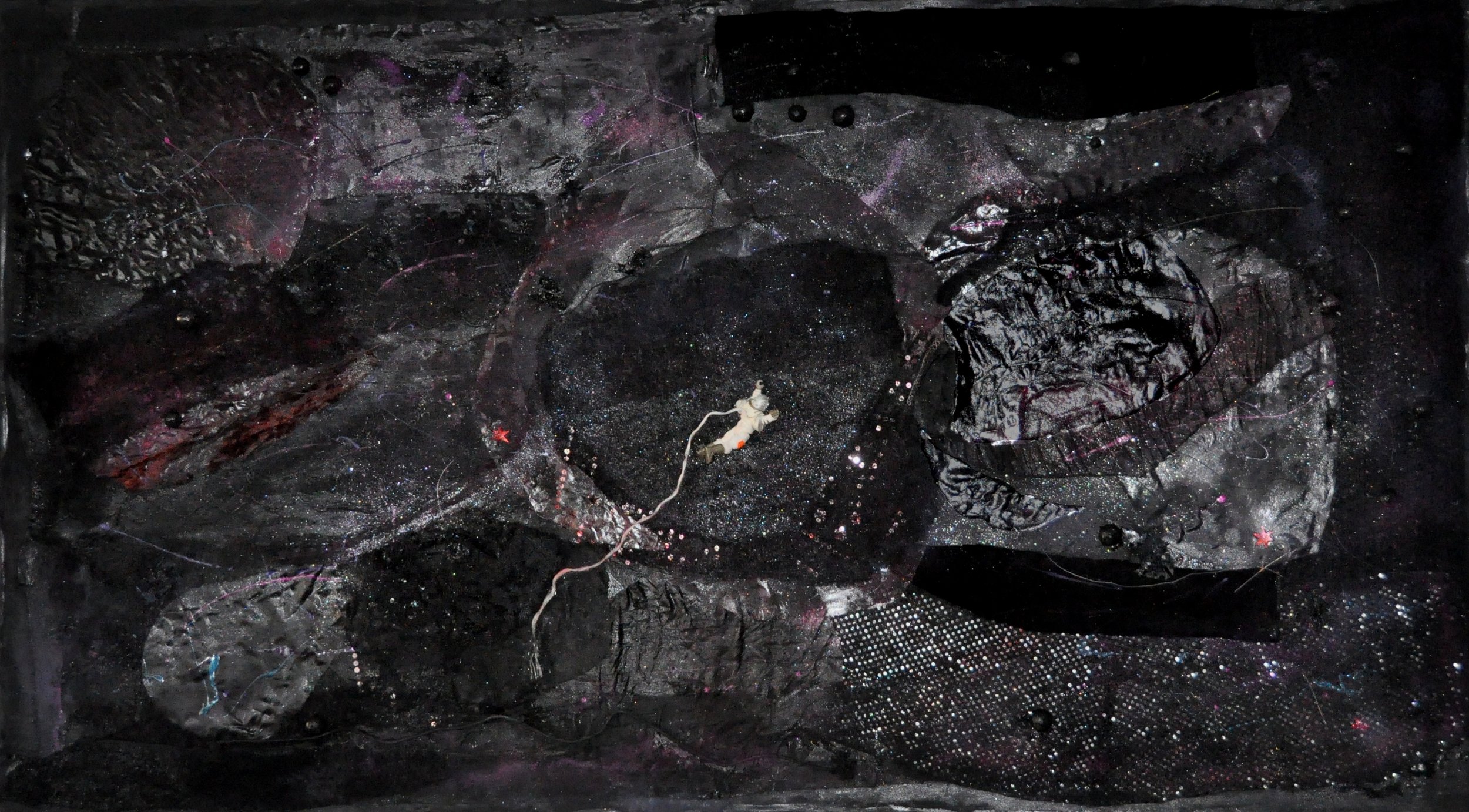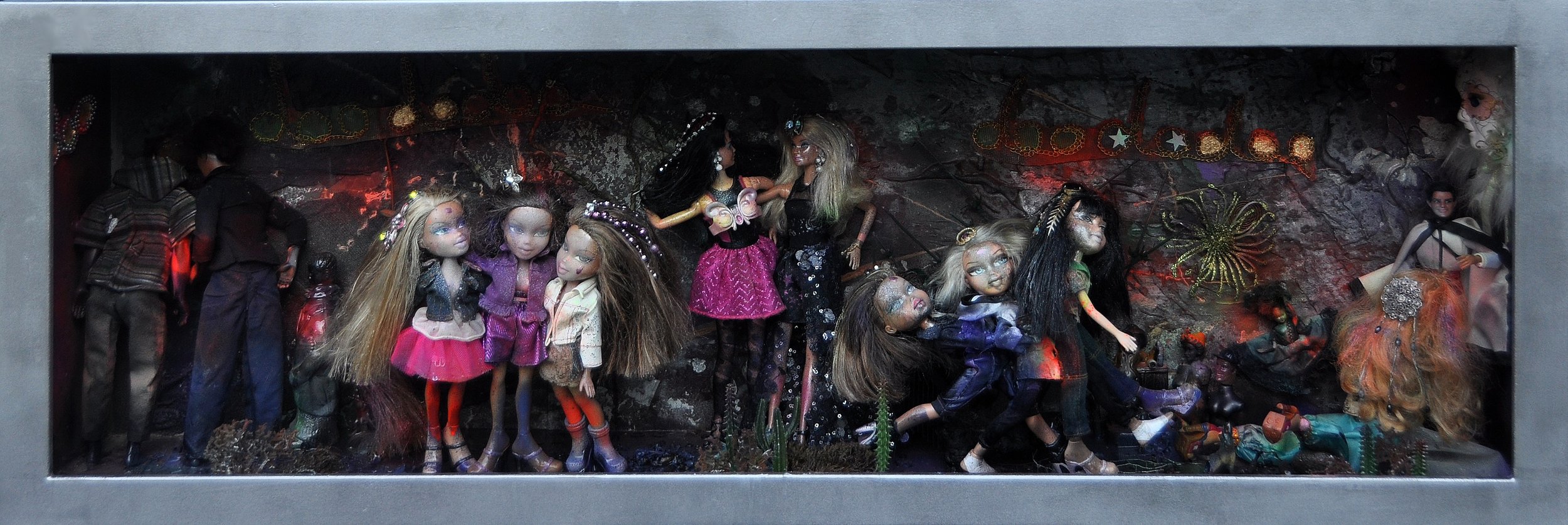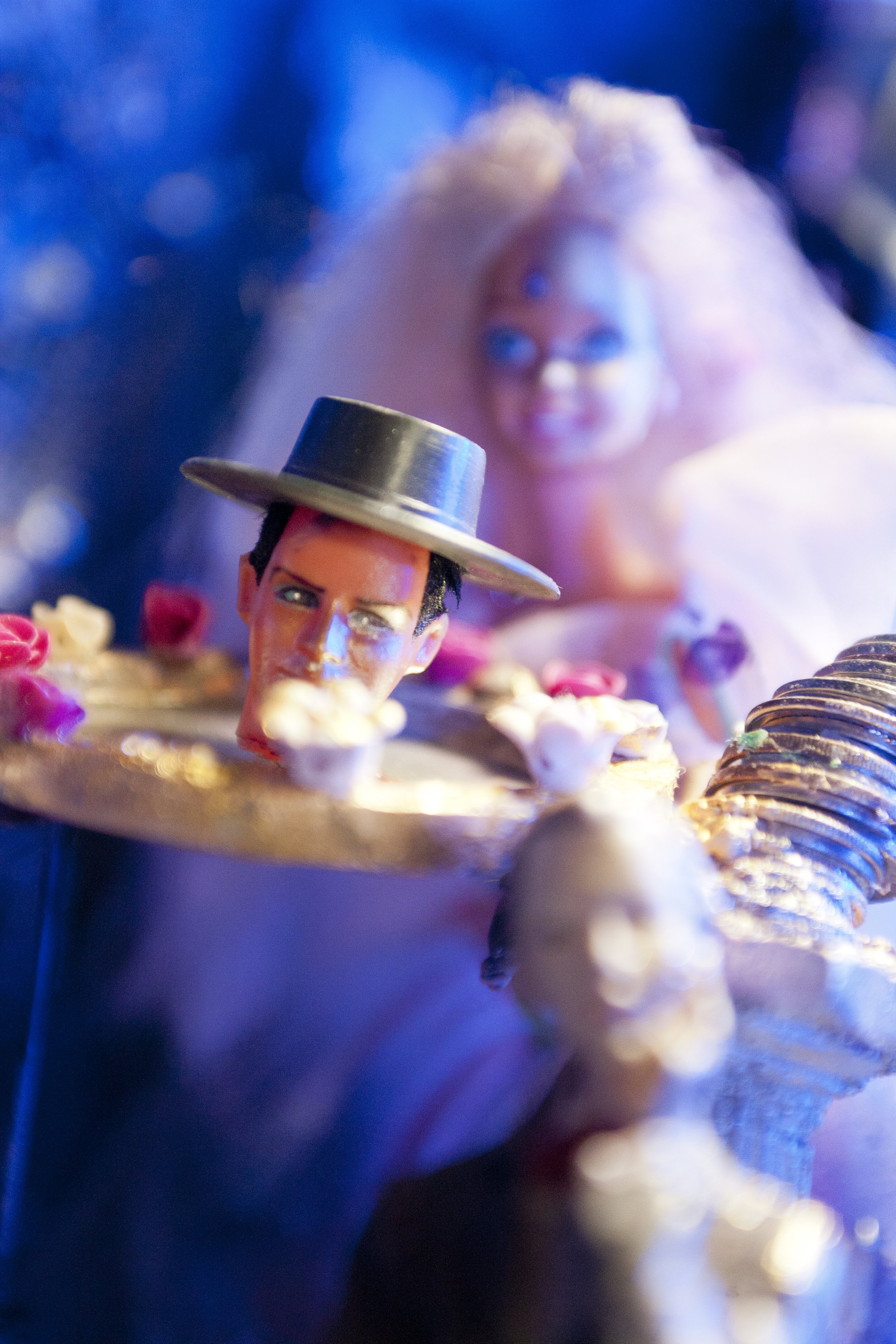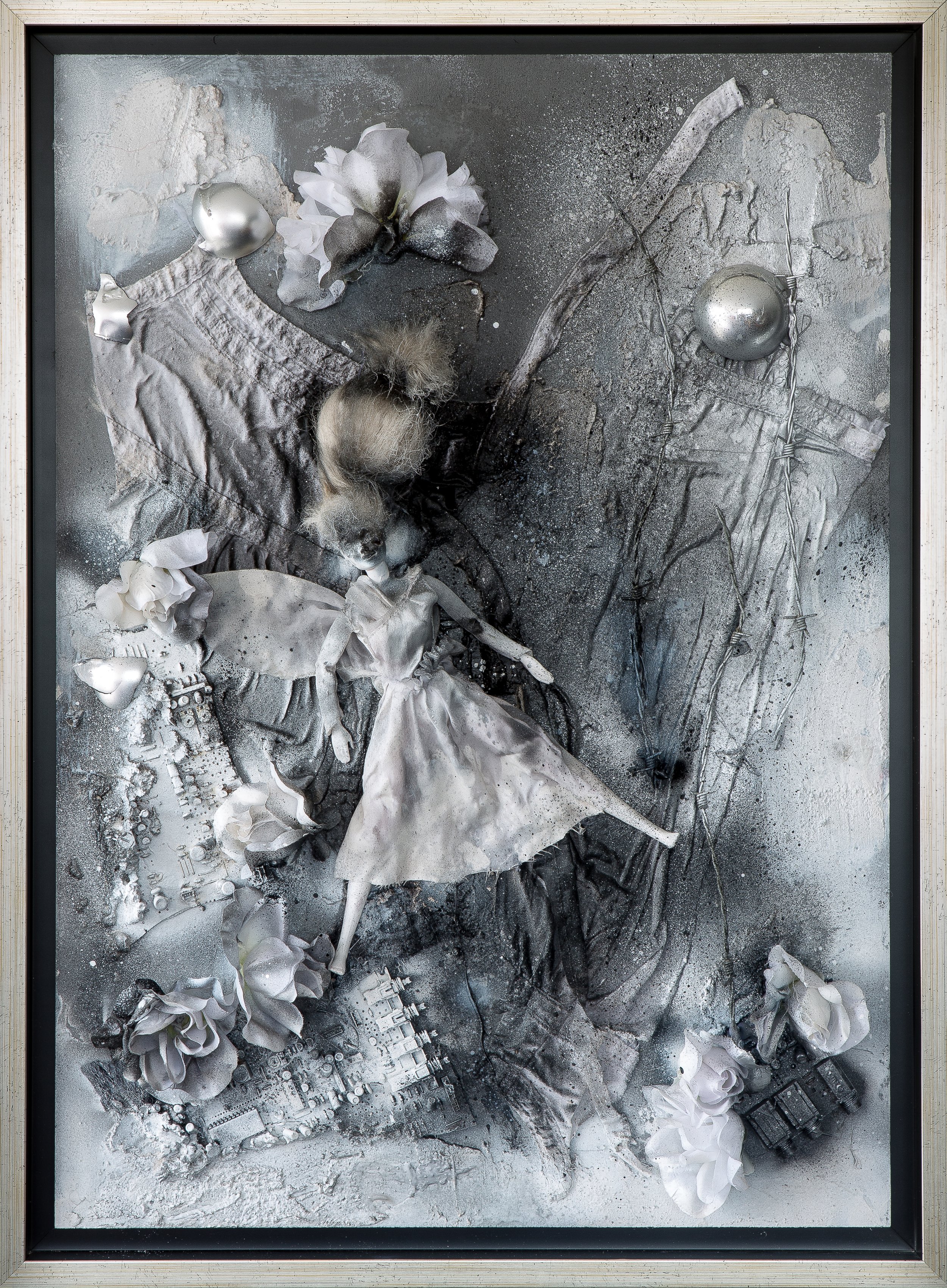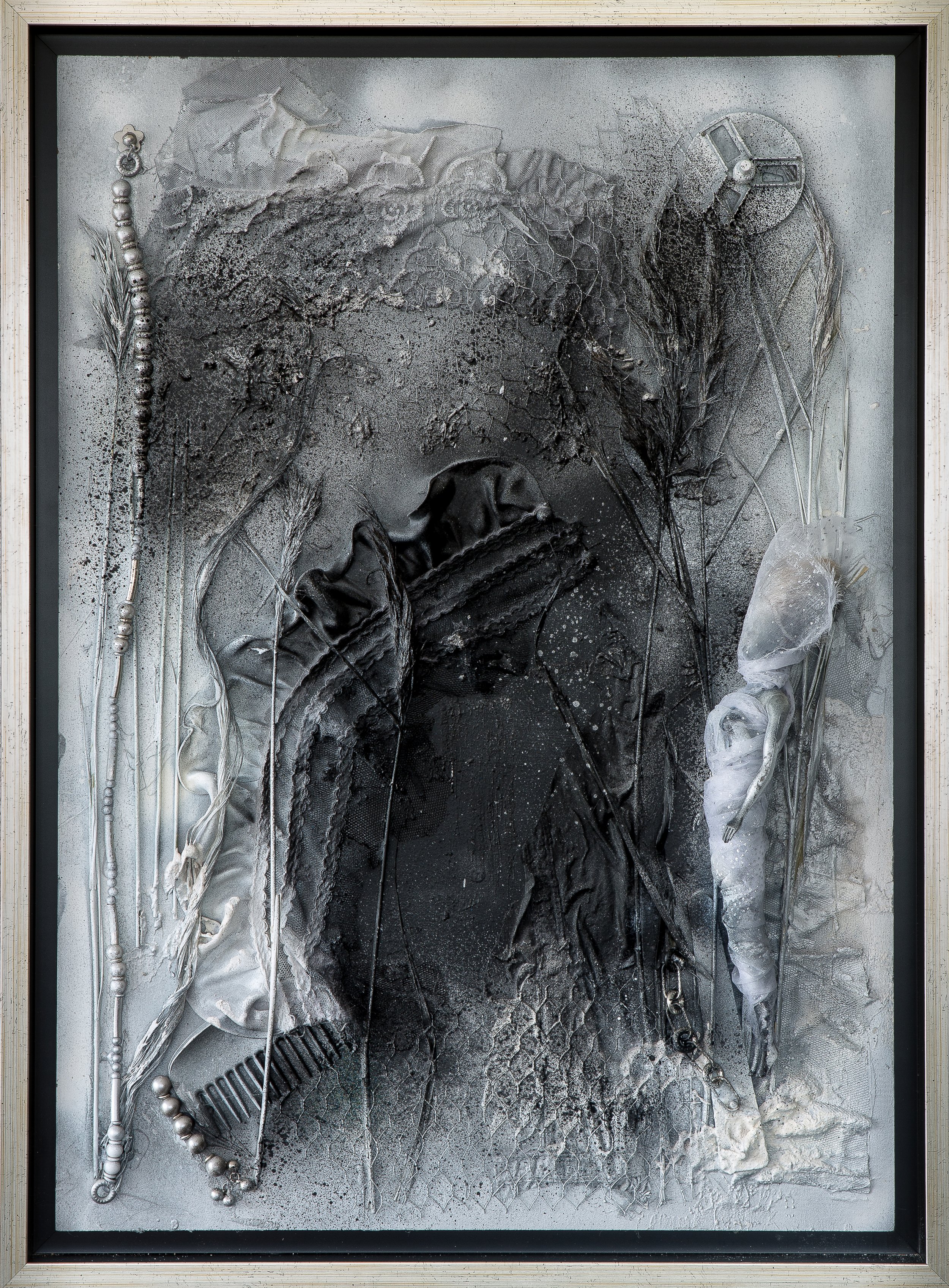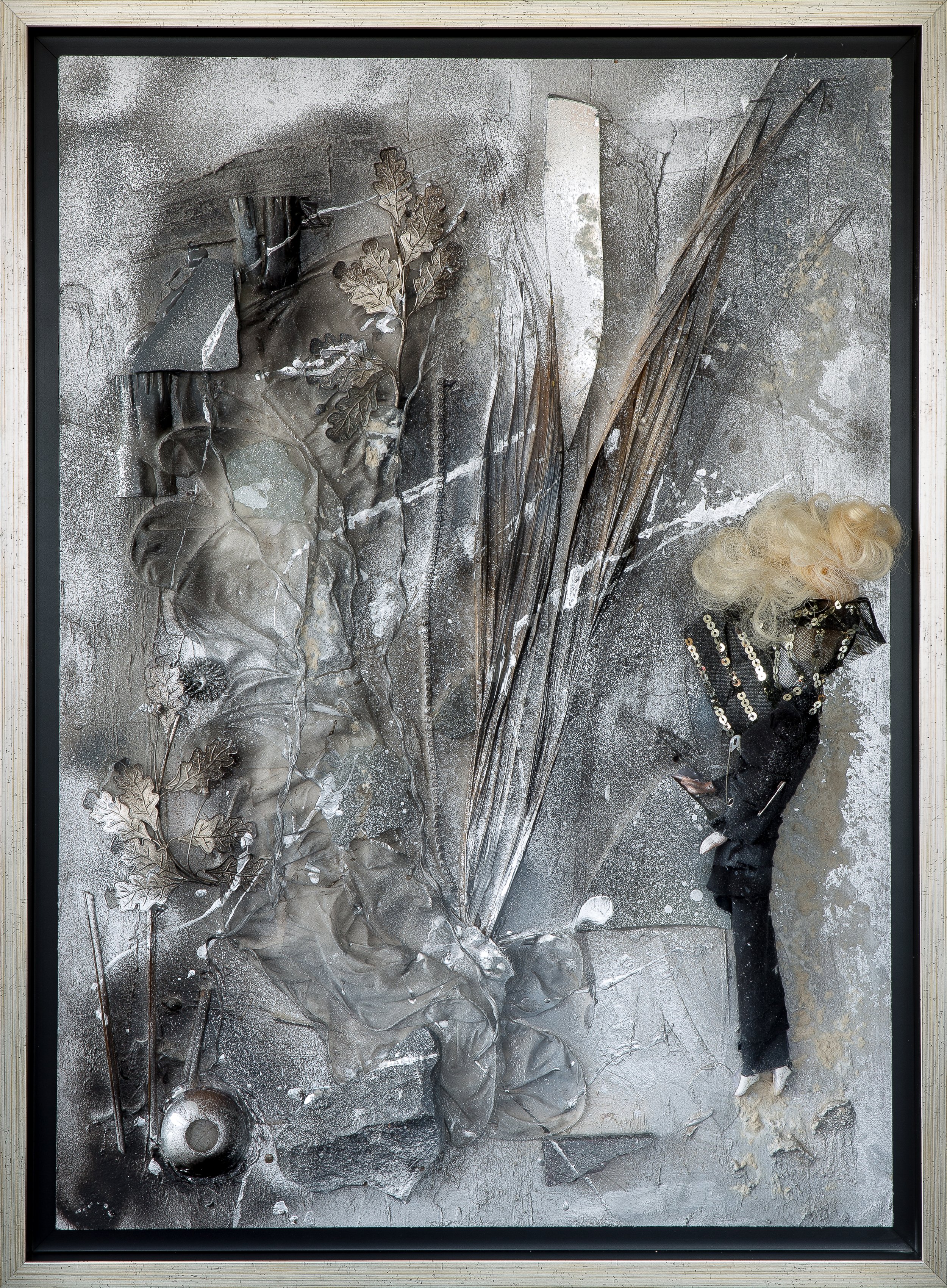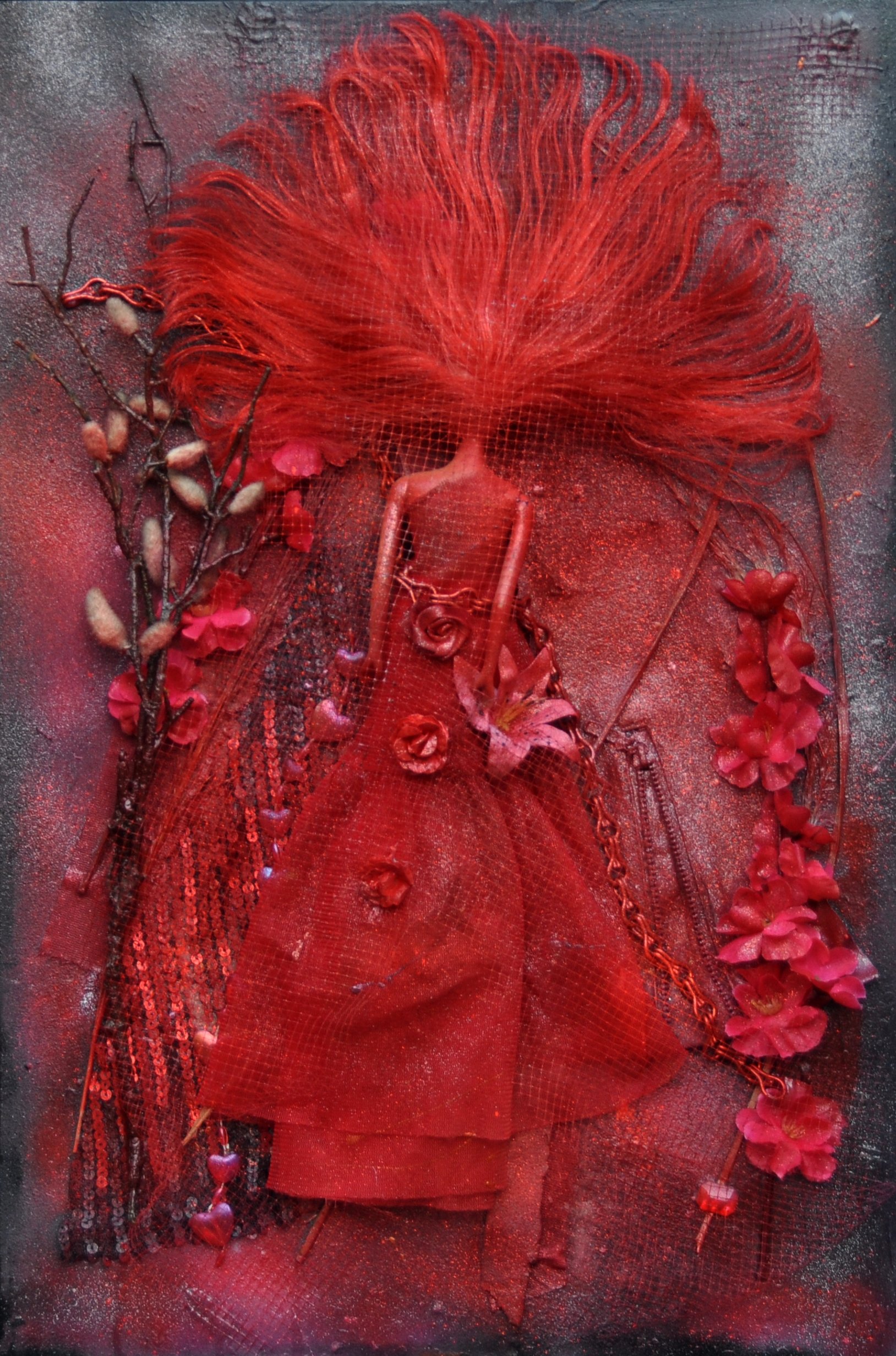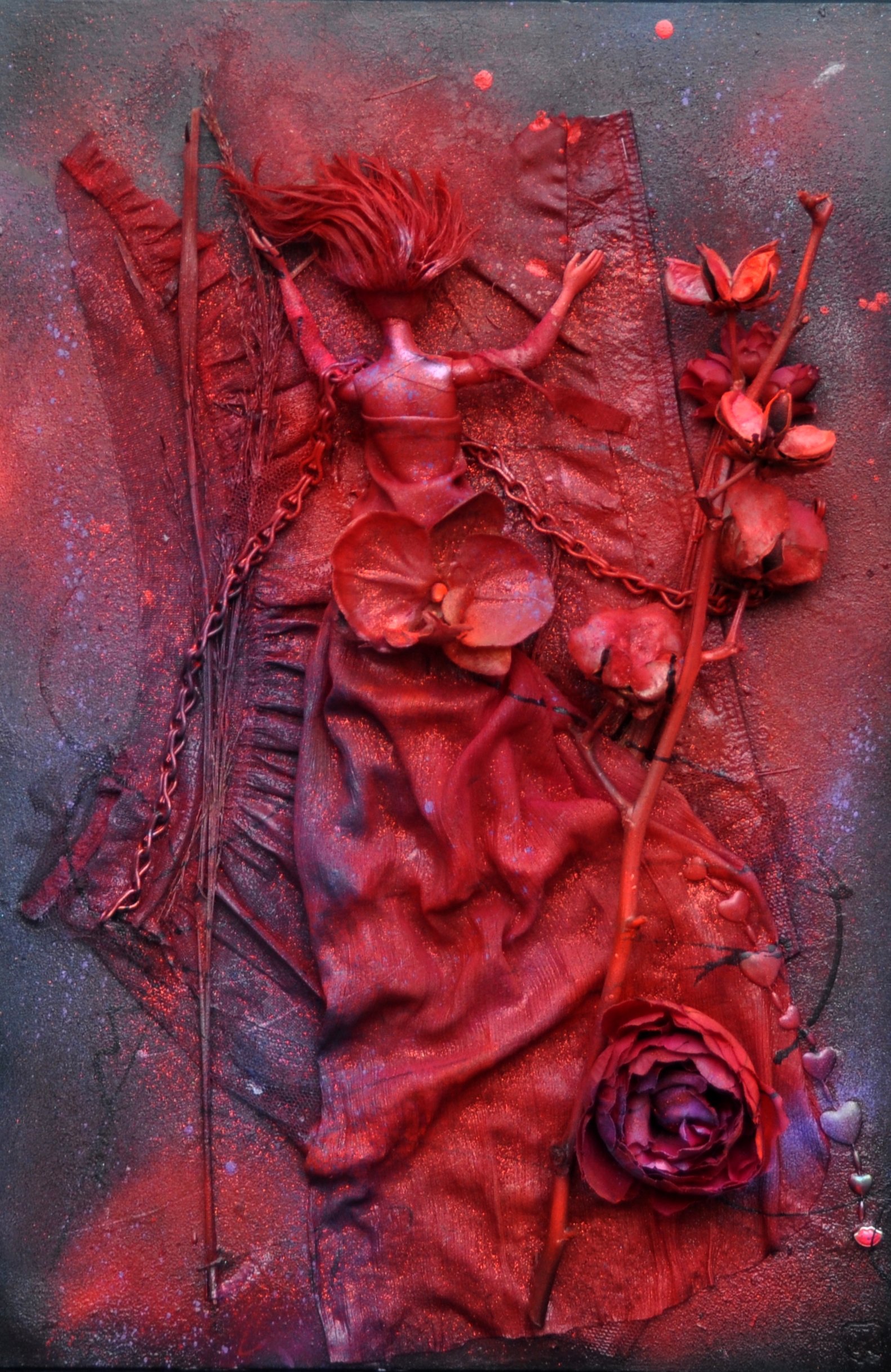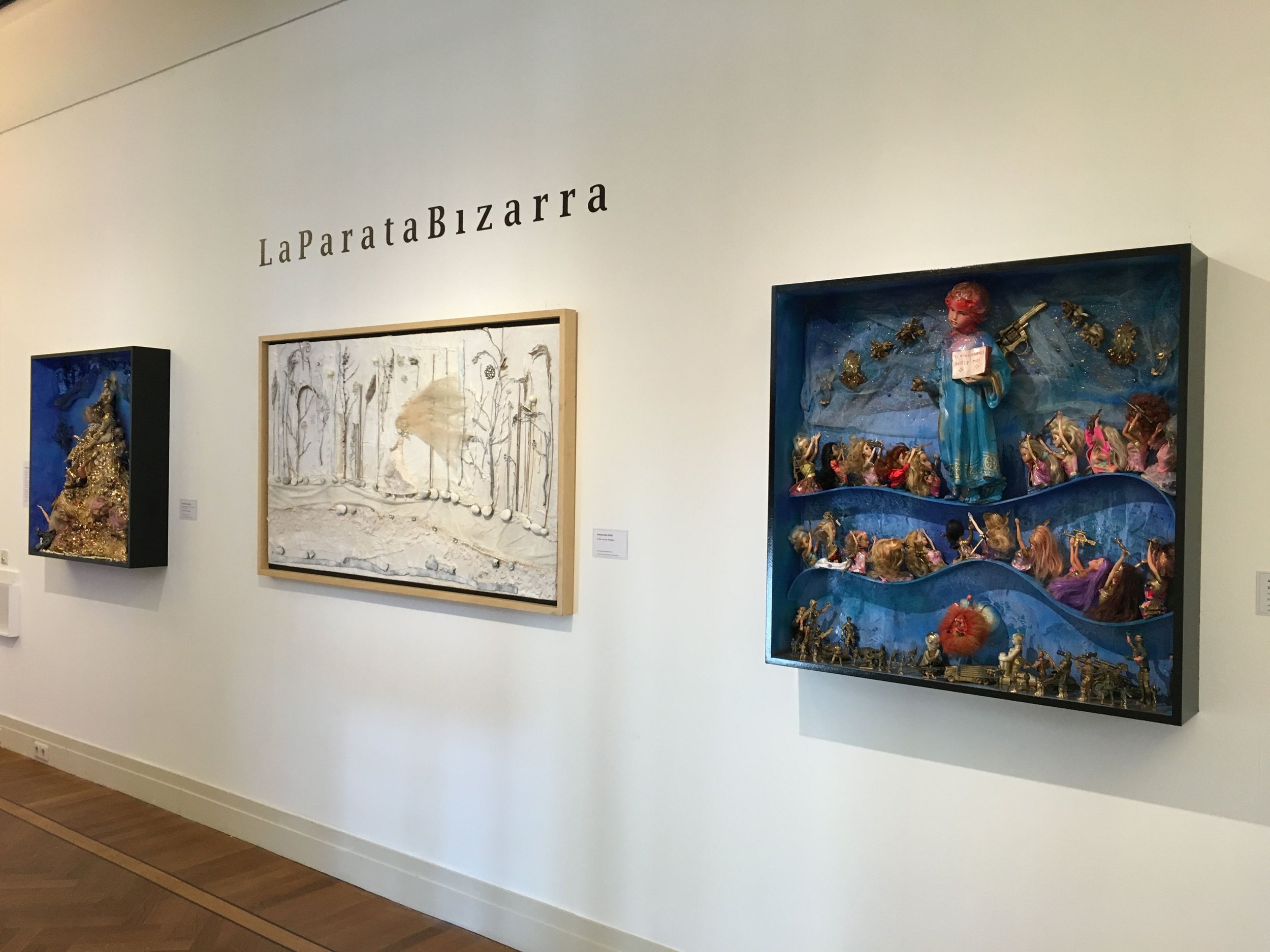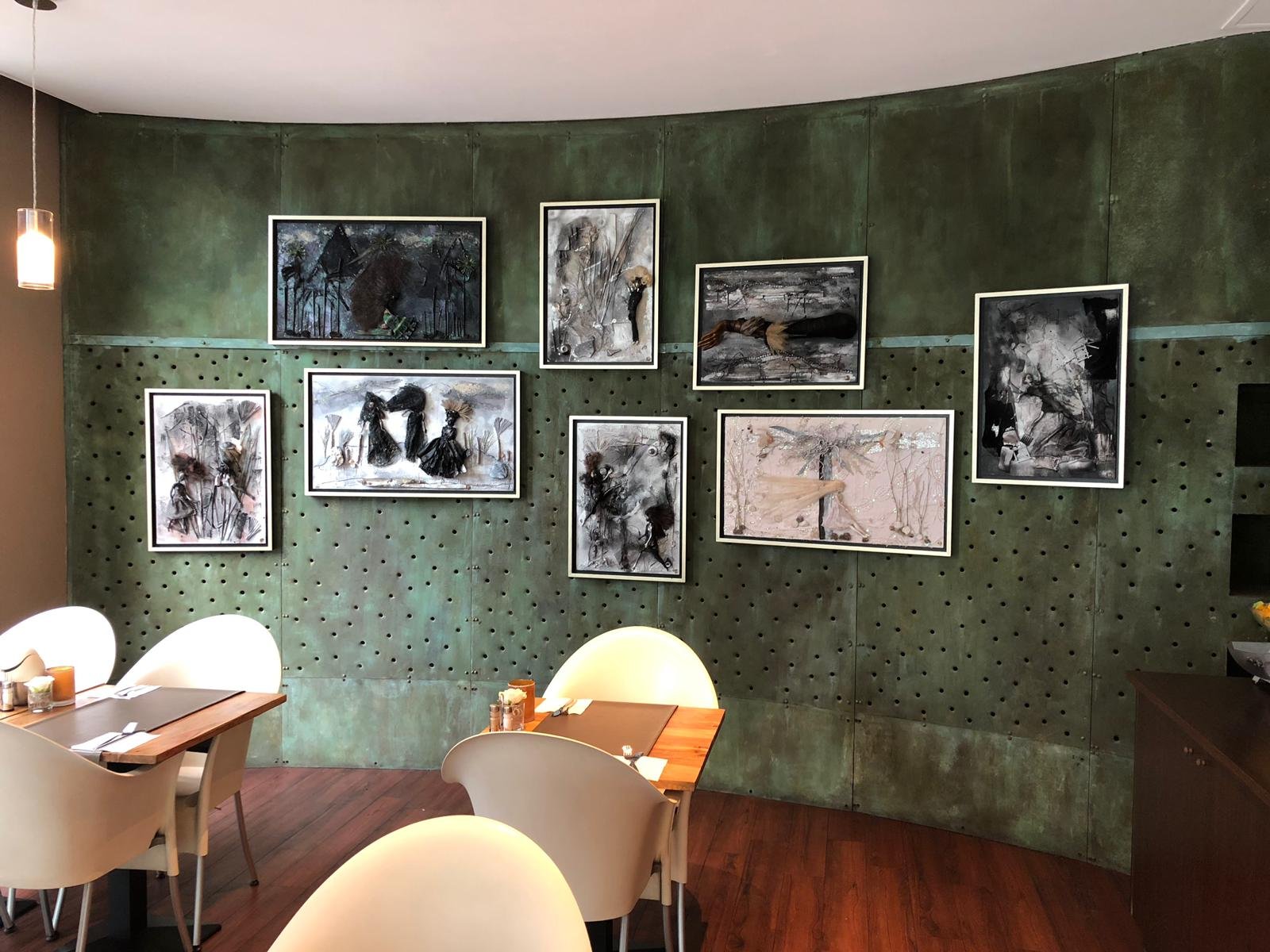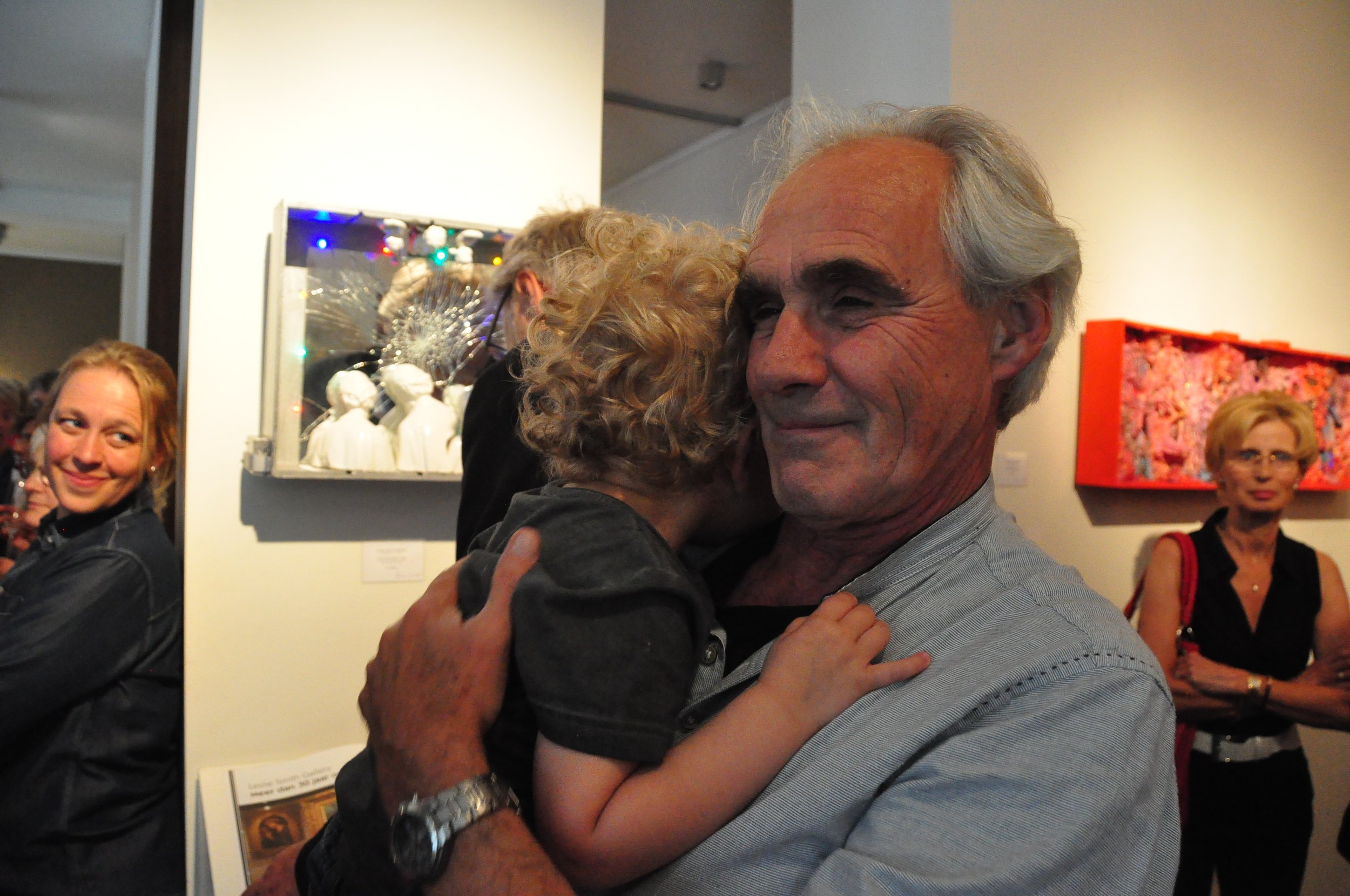Interview
Frank van der Meijden
Frank is a Dutch born artist (1946), who works mostly with found objects. His work is often housed in boxes and sometimes on a flat surface, but is always 3 dimensional.
Frank's creations are inspired by different topics, such as social, political or philosophical, but he also embraces lighter themes such as music and general fun.
His education started as studying to become an art teacher at the Pedagogical Academy. Frank later became the promoter and co-founder of the Rock Club Eksit, in Rotterdam, and subsequently a tour promoter in the 70’s, even managing some of the most well known Dutch bands, including Doe Maar, De Dijk, Het Goede Doel, Flairck and Bløf.
Needing to focus more on his own creativity, Frank concentrated his efforts on creating his own masterpiece scenes, and has been doing this since 2010, the same year he received the royal decoration for his work in the rock scene: Officer in Order of Oranje Nassau. Since then, his scenes have been shown across the world.


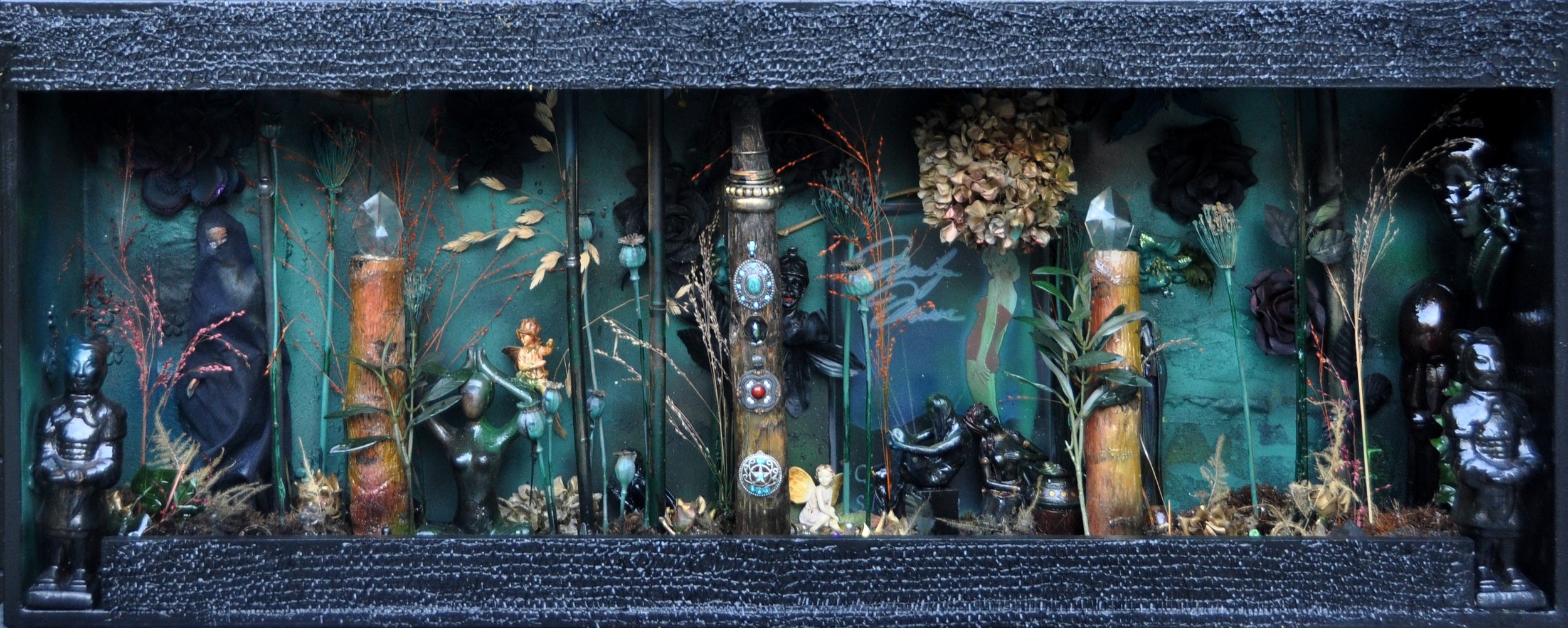
What is your background and how did you start your journey in the art world?
“I was born in 1946 in Rotterdam, Netherlands. When I was young, I decided to become a teacher at primary school. So I studied at the pedagogical academy, completed my education and became a teacher. While studying I was influenced by my art-teacher, who gave me a different outlook on art. During that time, I was writing a lot (poetry and articles about life), and also organizing small events. After two years I had a conflict with the inspector of education about creativity, and I decided to leave my job.
I then had the opportunity to start the first rock club in Rotterdam together with a friend, Eksit. I became the promoter of that club (1970). At that time, there were not many good Dutch bands, so I decided to go to London to get some bands from the UK. In fact, that was the start of the Dutch club circuit, for which I began to organize tours all over the country. This did not stay unnoticed, and one of the best bands in the Netherlands asked me to be their manager. Since then, I have been a tour promoter and manager, which among other things resulted in management of two of the most well known bands in the Netherlands, both singing in Dutch: Doe Maar and Bløf.
I always had a bit of regret about working and being creative for other artists, while not having the time and space to work on my own creativity. So when I decided to quit management, my first thought was to begin making art. Just for the fun of it. I thought…
First I had to collect material to work with, because my plan was to work with existing things, and to make scenes in a kind of diorama. So I needed cases, I needed paint and many other materials. So I visited, for example, flea markets and bought items from there that I thought I could use, for very low prices. That’s how I started my journey in art.”
What inspires you most?
“I was born in a socialistic family and that has always influenced me, as well as my work as a manager. So it is one of the most obvious things that I would elaborate on in my future art.
I hate greed, which in my mind is probably the worst of all evil; not to care for each other, not to care for nature and our planet, but just thinking about yourself. How can I get rich, richer, no matter what I have to do to reach that goal?
I also hate violence - physical and emotional. Both negative themes inspire me to make art.
There is also positive inspiration, which I get from music, my way of looking at people, and thinking about myself and life. Mysterious things and nature are other sources of inspiration.”
What themes do you pursue? Is there an underlying message in your work?
“Both greed and violence are main themes in my work as shown in pieces such as Mountain of Gold, It’s Insane, The Show Must Go On, The Offer, Running For Gold, Saving Mother Earth etc.
But other sources of inspiration are my life in the music scene. I have many songs in my head and I sometimes try to visualize them: Major Tom, Stairway to Heaven, Walk On The Wild Side, Lucy In The Sky With Diamonds, Purple Rain etc.). Sometimes I follow the lyrics, but not always - then I make my own interpretation, as shown in my work Babies in Black, Swan Lake, Happy Together.
Other themes are fairy tales and dreams, philosophical and sometimes just the fun of making something.
One of the problems with making my scenes is that I cannot always visualize what I want, because the material I use limits me as well. I simply cannot express everything I want to.”
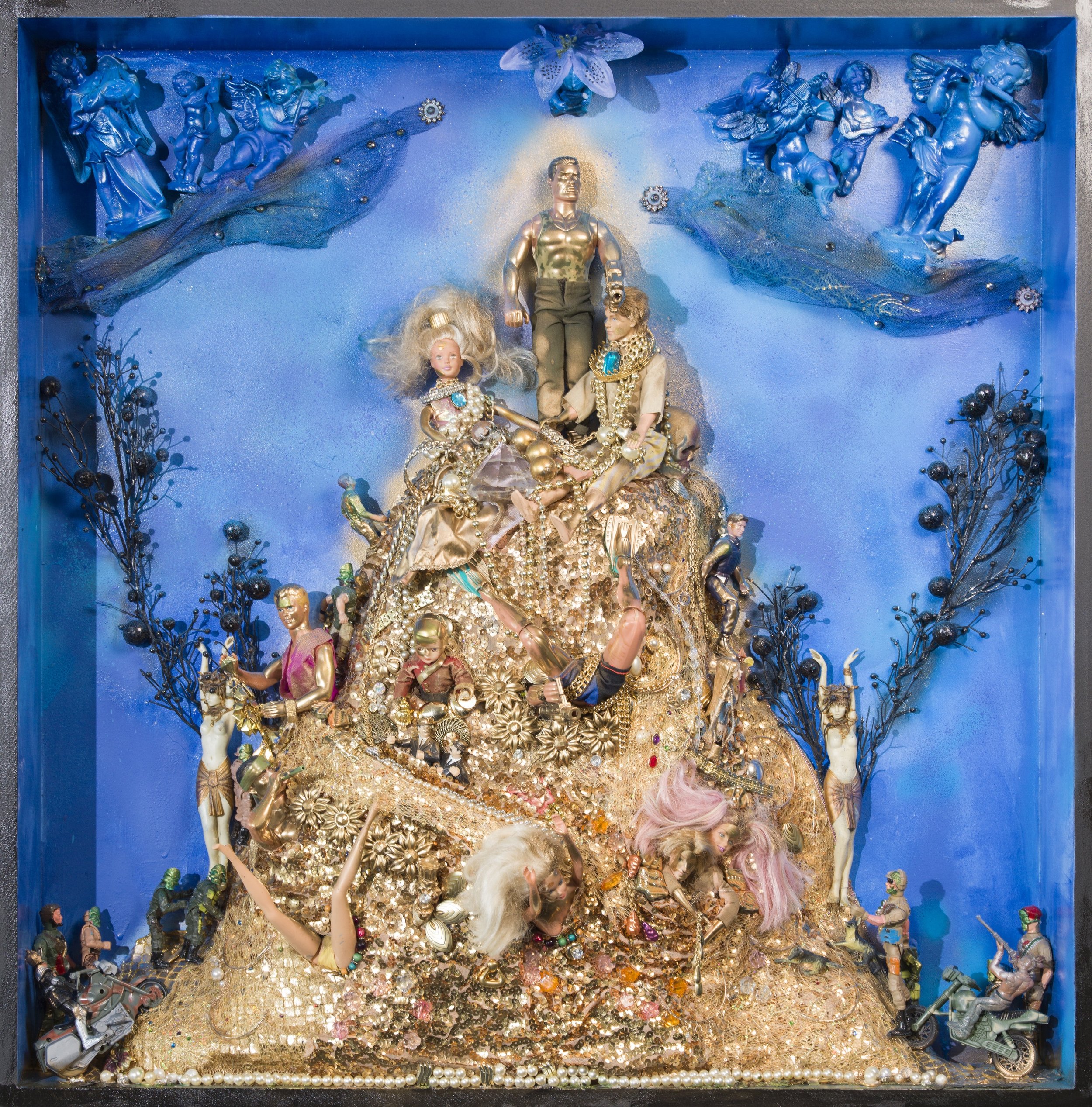
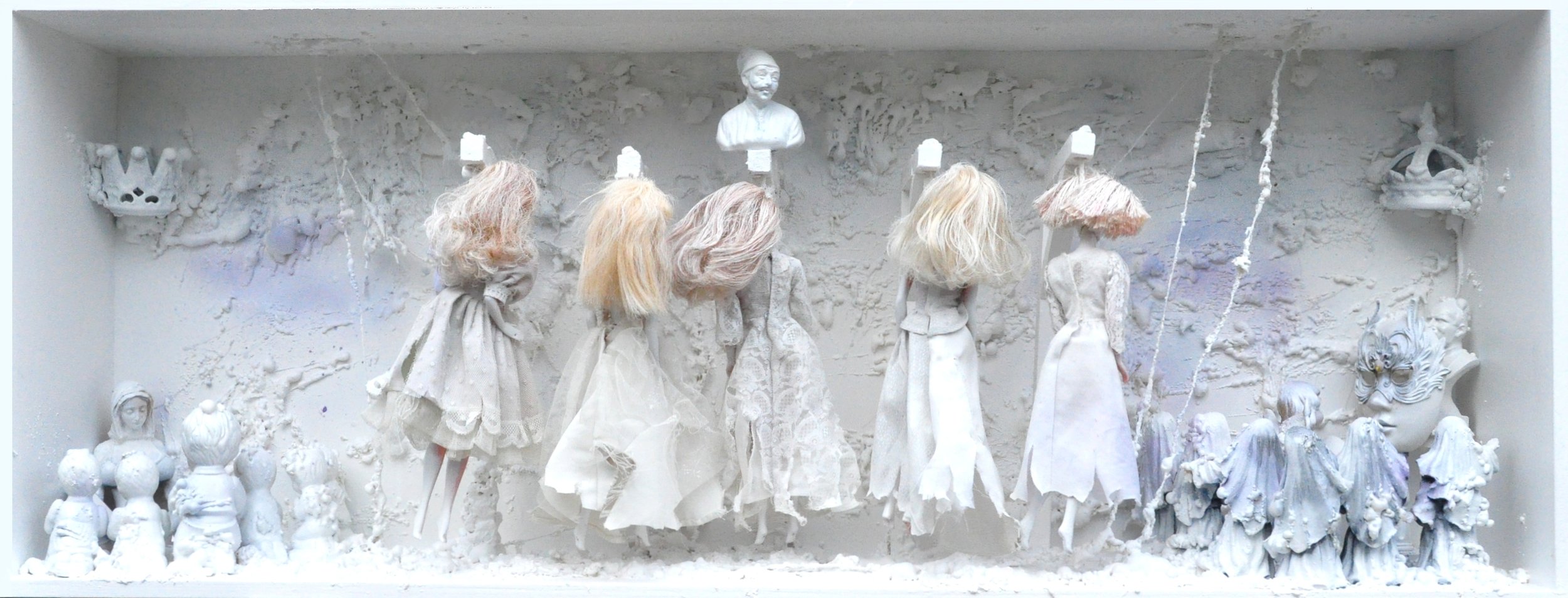
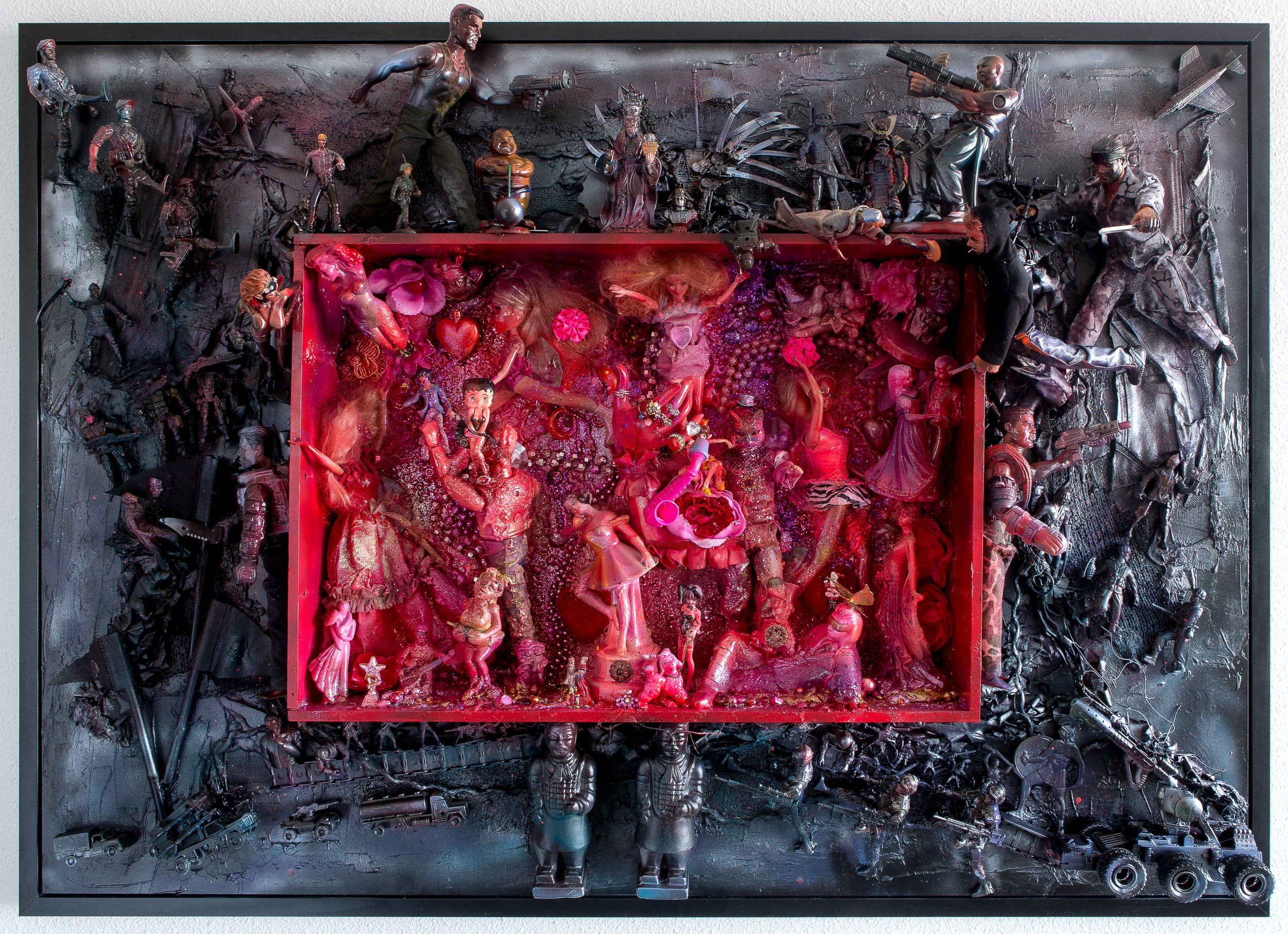
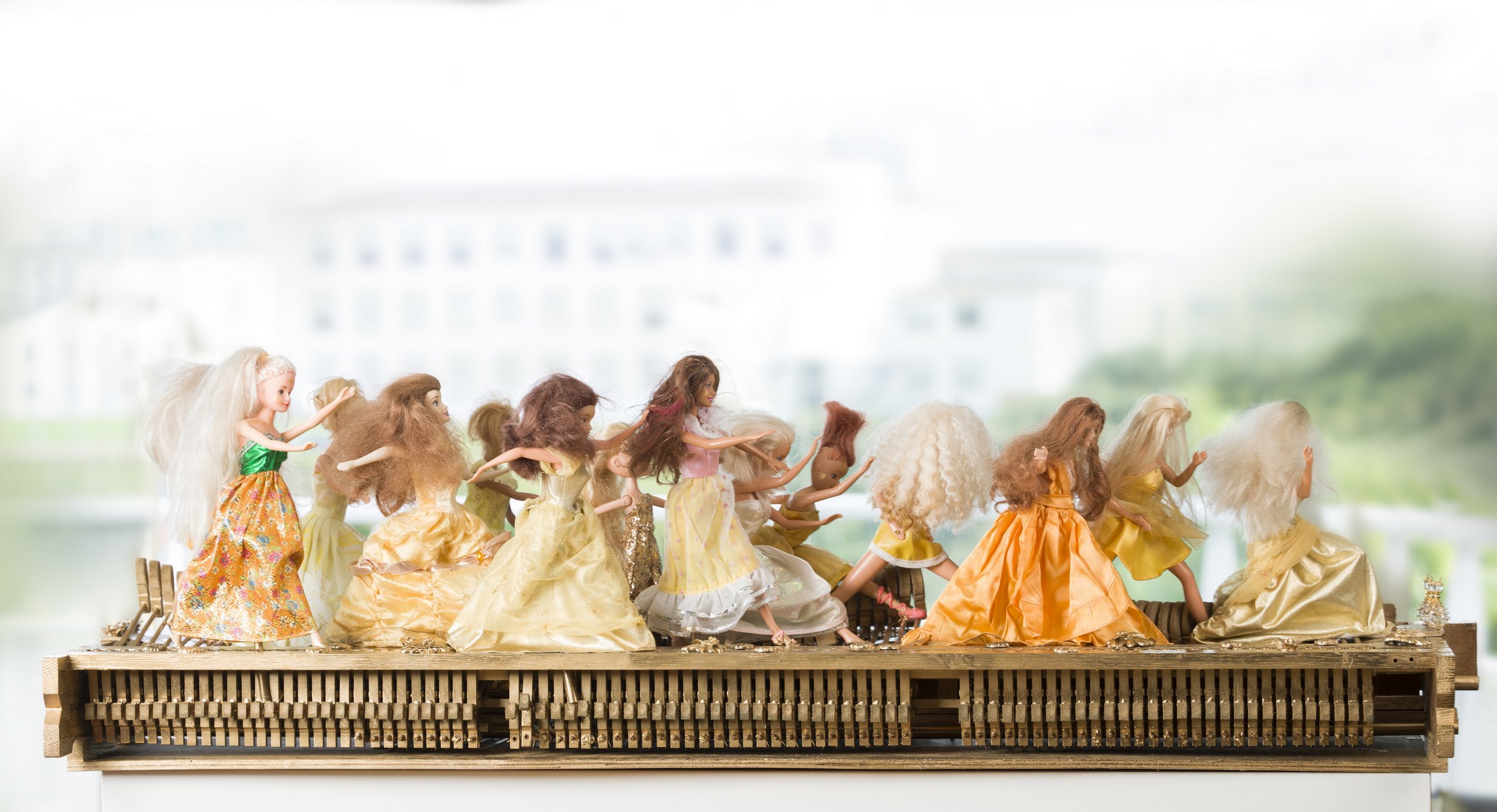
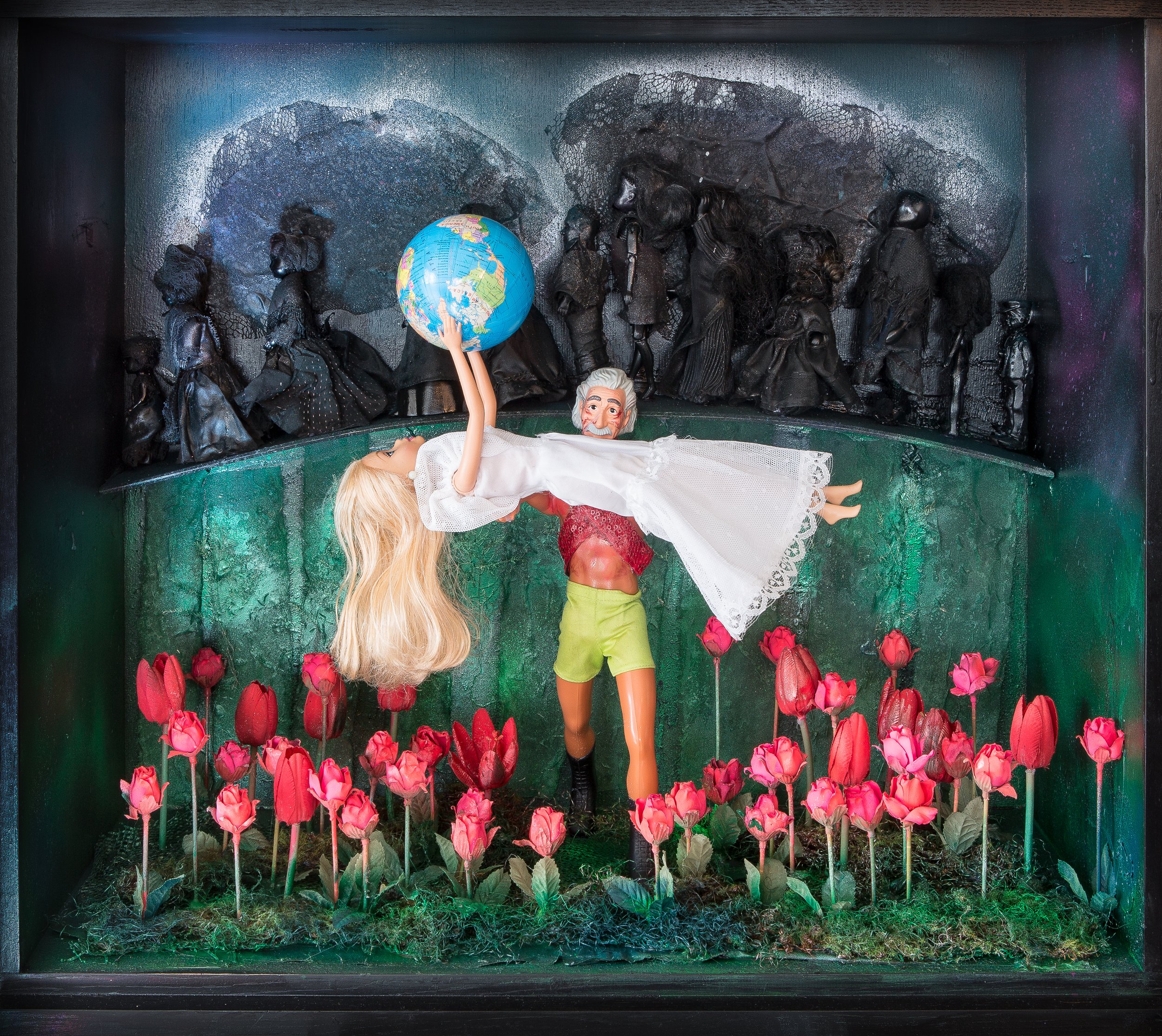
How would you describe your work?
“I always work in 3-dimensions. Even if I work on a flat piece of wood. That’s logical, because the stuff I use has volume. Some people call my work diorama’s, but I prefer to call them scenes (visual, but silent theater). I think in most of my work there is much to unpack, especially if you look at the details. Like in La Parata Bizarra there are many, many little details which all have a symbolic function.
I think most of my work is surrealistic, symbolic and mysterious. It tells a story, so you could even call it storytelling. But in fact there is also a lot of humor in my work. I like to handle heavy problems with some lightness (laughing about your own stupid mistakes). And also often with a smile, if I look at the way we suffer to survive. I still enjoy life very much. I am a happy person.”
Which artists influence you most?
“I gain much inspiration while visiting museums and galleries, which I do often. I love art from people like Salvador Dali, Jeff Koons, Basquiat, Andy Warhol, Keith Haring, Richter, Lichtenstein, Rauschenberg, Niki De Saint-Phalle and her companion Jean Tinguely, but also Vincent van Gogh, Monet, and other impressionists. Too many to mention. There are always new people to discover. A couple of weeks ago I visited an exhibition with work of Mark Brusse - it was great! Also a Dutch artist like Mark Manders stimulates my brain, or the photographer Peter Lindberg. In fact, this inspiration led to my set of monochromes.”
What is your creative process like?
“Mostly there are 2 different ways to classify my process:
1. I have some idea in my head and then I try to visualize that idea. What exactly do I want to express? What can I use to reach my purpose? What material do I have to use? Do I have figurines to give the right meaning? How big should it be? Do I make it in cases or can I do it on a flat surface? How do I realize the techniques to get them in the right position I want?
Then I start visualizing the scene I want to make. As you can see, I use many Barbie’s in my work. That has a special meaning. Barbie’s, Kens, Action Men etc., represent people. I can put them in special circumstances where they represent what I want to express. In clothes as well.
Also people know the figurines I use. They have them in their houses, on their chimneys, the window sills or showcases. Something which is in our primal memory. I use the same material in different situations, so I can have the choice of putting them in unusual positions.
2. Sometimes I already have a piece or a figurine which suddenly gives me an idea, and then I will start thinking how to reach the idea I have.”
What process, materials, techniques, etc., do you use to create your artwork?
“The material and items I work with are very diverse. Almost everything is found at flea markets, marketplaces on the internet (95% is used before) or just in nature (at the beach, in the woods, or from the garden). I use Barbie’s, figurines from all times, toys, different fabrics, dried plants, wood, old jewelry, paint (most spray paint), stones, artificial flowers, glue in different forms, PUR foam, gypsum and so on.”
What is an artist’s role in society and how do you see that evolving?
“I think an artist has a very special role in society. He/she can designate people to abuse, but also make people think about themselves and society. They give people new ideas, introspection. However, there are artists who just work to make something beautiful. I can get into a trance seeing the love and the beauty, or the precision of their craftsmanship.”
Have you had any noteworthy exhibitions you'd like to share?
“My very first exhibition was just for 1 day in an old discotheque in Middelburg (Zeeland). A friend of mine persuaded me to show my very first work in his place. I was very nervous, but it turned out to be a nice little success and I got an invitation to a professional gallery.
A couple of years later I had a great exhibition, together with a photographer in the crypts of an old abbey in (again) Middelburg. For that purpose, I made a large work: La Parata Bizarra. It is still one of my most important works. It’s a story in 9 parts telling my idea of how the world is ruled and the ever repeating history of trial and error. That exhibition lasted for 3 months and was extended for a special festival. The exhibition was visited by 3500 people.
One year later I had my first exhibition in a known gallery in Amsterdam (Smith-Davidson Gallery). For me it was a big event. I am still represented by that gallery. They also showed my work at Art Miami, Art Silicon Valley, Art New York etc.”



